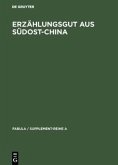Please note that the content of this book primarily consists of articles available from Wikipedia or other free sources online. The Germania, written by Gaius Cornelius Tacitus around 98, is an ethnographic work on the Germanic tribes outside the Roman Empire. This work survived only in one single manuscript that was found in Hersfeld Abbey in Germany, at the time part of the Holy Roman Empire, and brought to Italy in 1455 where Enea Silvio Piccolomini, later Pope Pius II, first examined and analyzed it, whereby he sparked interest among German humanists such as Conrad Celtes, Johannes Aventinus, and Ulrich von Hutten. After study and debate the Germania was considered an authentic source on ancient Germany. Ever since its discovery, treatment of the text regarding the culture of the early Germanic peoples in ancient Germany remains strong especially in German history, philology, and ethnology studies, and to a lesser degree in Scandinavian countries as well.
Bitte wählen Sie Ihr Anliegen aus.
Rechnungen
Retourenschein anfordern
Bestellstatus
Storno








